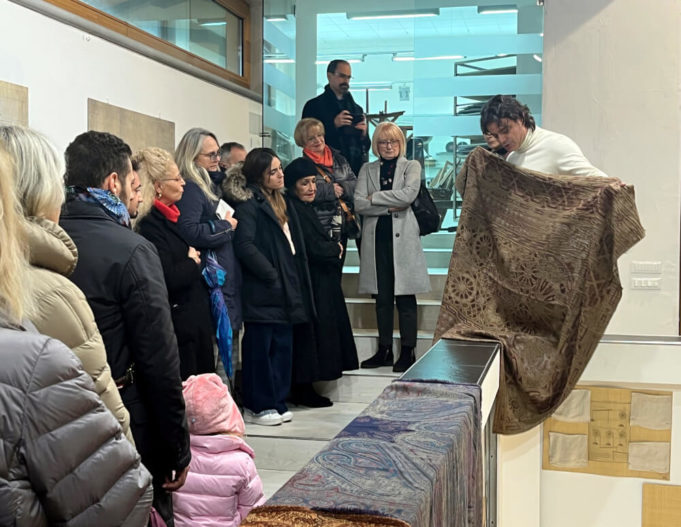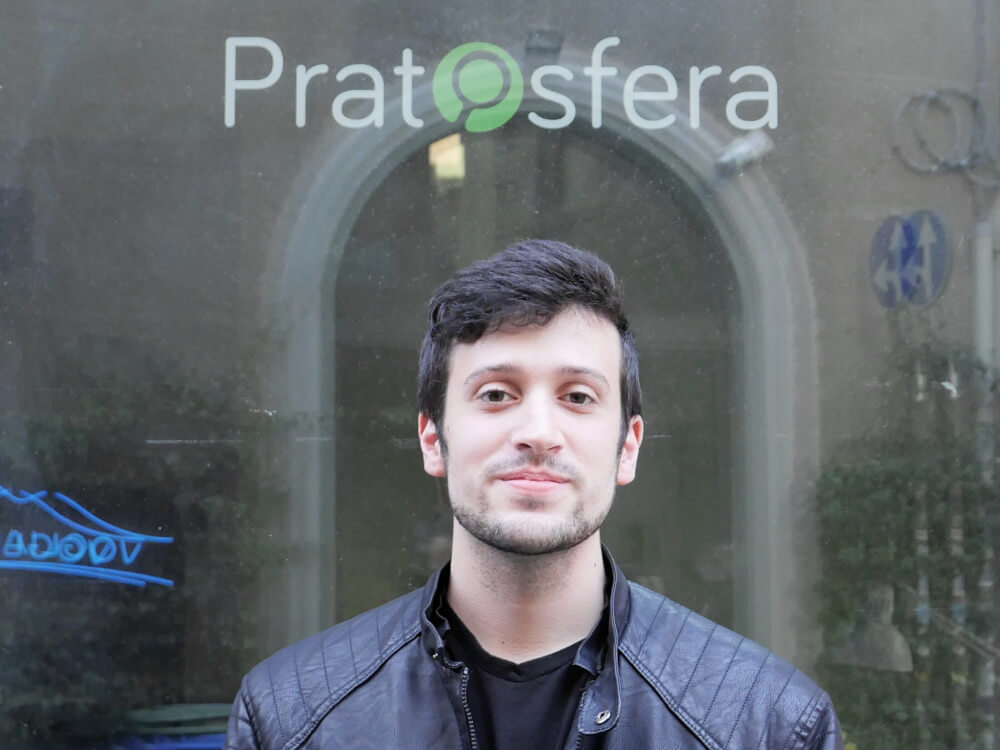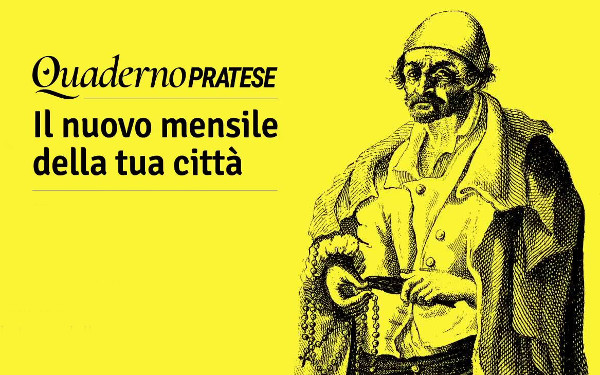Una delle prime cose che ho imparato quando sono arrivato a Prato è che la città è molto famosa per la sua produzione tessile. Ho visto molte fotografie, ho consociuto alcuni fatti sulla città, ma non comprendevo l’importanza dei tessuti a Prato.
La scorsa settimana, ho ricevuto un invito da Gabriele Bosi, l’assessore per il turismo di Prato, a vivere un evento che tratta l’importanza e la storia della produzione tessile a Prato. L’evento è stato ospitato da TIPO, o Turismo Industriale Prato, un’organizzazione che si occupa di facilitare il turismo legato all’industria del tessuto a Prato.
L’evento è stato sabato scorso, 25 febbraio. Il gruppo era formato da molte persone di Prato ma anche da fuori; il ritrovo è stato in Piazza Macelli. L’evento è cominciato con una panoramica sulle fabbriche tessili pratesi. Dopo, il gruppo è stato portato alla Fabbrica Lucchesi – una storica azienda tessile che produce tessuti da molti anni. Prima della visita guidata nel museo e nei luoghi in cui si producono i tessuti, abbiamo conosciuto la storia della loro produzione tessile e della famiglia che da più di 200 anni lavora a Prato.
Una delle cose che mi ha colpito di più è stato il modo in cui l’industria tessile ha perseverato per tutto il XX secolo, nonostante le difficoltà affrontate durante la Seconda Guerra Mondiale. Durante il pomeriggio, abbiamo visitato molte parti della fabbrica, tra cui le macchine tessili utilizzate durante tutto lo scorso secolo.
Dopo aver visitato l’intera fabbrica, ho avuto il piacere di parlare con Emanuele Lucchesi, l’imprenditore che ci ha fatto da guida. La famiglia Lucchesi ha fondato la fabbrica alla fine del 1800: volevo approfondire con lui delle differenze tra la produzione tessile negli Stati Uniti e quella in Italia.
Una delle cose più importanti per quanto riguarda la produzione tessile negli Stati Uniti riguarda il “Fast Fashion” – una modo di dire che ho scoperto esiste anche in Italia. Ho chiesto se c’è lo stesso problema in Italia, ma specialmente a Prato. Mi ha detto “Il Fast Fashion naturalmente è una realtà oggi presentissima per cui è chiaro che non si può dire non ci sia. Trovo comunque che non sia, almeno per come la vedo io, la direzione che dovrebbe prendere Prato”.
“Noi in Italia abbiamo una storia lunga – ha continuato – una tradizione molto lunga in tanti settori, quindi tante cose noi le creiamo”. Lucchesi mi ha parlato anche del settore manifatturiero in Italia, e della sua importanza. Ha detto che “La parte manifatturiera in Italia è veramente molto importante, il simbolo del nostro Paese”.
Per quanto riguarda le differenze tra gli Stati Uniti e l’Italia, ha detto che “È normale che negli Stati Uniti ci sia una realtà completamente diversa, gli Stati Uniti hanno una storia più recente della nostra”.
Dopo questa conversazione, il gruppo è andato al Museo del Tessuto, vicino alla Biblioteca Lazzerini. Durante la visita guidata, ho visto le vecchie macchine che venivano utilizzate per creare tessuti e anche i campionari di tessuti risalenti all’inizio del 1900. Non avevo mai sentito parlare di questi campionari prima d’ora e li ho trovati molto interessanti, specialmente il modo in cui questi libri vengono utilizzati anche oggi: per la creazione delle serie tv su Netflix o su altre piattaforme popolari, i registi devono usare questi campionari per vedere come vestire i loro personaggi.
Soprattutto, prima della visita guidata, non avevo capito l’importanza del settore tessile per Prato e neanche il modo in cui la città esporta i tessuti in tutta Italia e all’estero. Ho trovato molto interessante che l’industria tessile sia così importante e abbia un museo ad essa dedidcato. Cosa nuova per me, perché non se ne vedono molti negli Stati Uniti.
Nei prossimi mesi Samuel Weinmann racconterà Prato dal suo punto di vista. Seguirà concerti, spettacoli e molto altro e poi ne scriverà sia in inglese che in italiano su Pratosfera.
English Version
One of the first things that I learned when I arrived in Prato was that the city is renowned for its textile industry. I have been able to see many historical photographs of the city’s textile industry, and I’ve learned many facts about its textile production, but I have yet to be able to tangibly visualize the importance of textiles in Prato.
However, last week I received an invitation from Gabriele Bosi–Prato’s councilor for Tourism–to attend an event that deals with the importance of Prato’s textile production history. The event was hosted by TIPO, or Prato Industrial Tourism, which is an organization that focuses on facilitating tourism in Prato.
Taking place on Saturday, Feb. 25, the event kicked off at the Piazza dei Macelli, with many people from Prato and from outside of Prato gathering in anticipation. The event started with a general overview of textile production in Prato; after this introduction and overview of the city’s history, the group was taken to the Lucchesi Factory, a historically important textile company that has produced fabrics in the city for many years. Before the tour of the museum and in the places where textiles were produced, we also learned about their textile production history, and the history of their family.
One of the things that struck me the most about the history of Prato was the way that the textile industry has persevered throughout the 20th century, despite the difficulties that they faced during the Holocaust and the workers who were deported during that period.
During the tour, we were also able to see many different parts of the factory, such as the textile machines that the family used during the 20th century. After having visited the entire factory, I had the privilege of speaking with Emanuele Lucchesi, the entrepreneur who gave us the tour. The Lucchesi family founded the factory at the end of 1800, so I sought to speak with him about the differences between textile production in the United States and in Italy.
One of the most current topics regarding textile production is ‘Fast Fashion,’ a term that I found existed in Italy as well. I asked if he has seen the same problem in Italy, but especially in Prato. He told me that “Fast Fashion is naturally a reality that is very present around the world, and it’s clear that you can’t say it doesn’t exist. However, at least the way that I see it–this shouldn’t be the direction that Prato goes in.”
He elaborated, saying that “In Italy we have a very long history, and a very long tradition in many sectors, so it’s only natural that we also create many things.” He then spoke to me about the manufacturing sector in Italy, and of its importance. He said that “the manufacturing sector in Italy is truly very important; it’s the symbol of our country.”
Moreover, regarding the differences between the United States and Italy, he told me that “it’s normal that in the United States there is a completely different reality,” and that “In the United States, they have a much more recent history than ours.” After this conversation with Lucchesi, the group went to the Textile Museum of Prato, which is close to the Lazzerini Library. During
the tour I saw many of the old machines that were used to create textiles, and the textile swatch books that dated back to the beginning of the 20th century.
I haven’t learned much about swatch books for fabrics before, but I found it very interesting, especially the way in which these books are still used today. In the creation of TV shows on Netflix and other popular platforms, their directors have to use these swatch books to see how they can dress their characters.
Overall, before the first tour, I didn’t realize the sheer importance of the textile industry in Prato, nor did I realize the scope of their production, as they export textiles throughout Italy. I found it very interesting that this industry is so important in Prato that there are multiple museums dedicated to it, which is something new to me that I haven’t seen much of in the United States.











